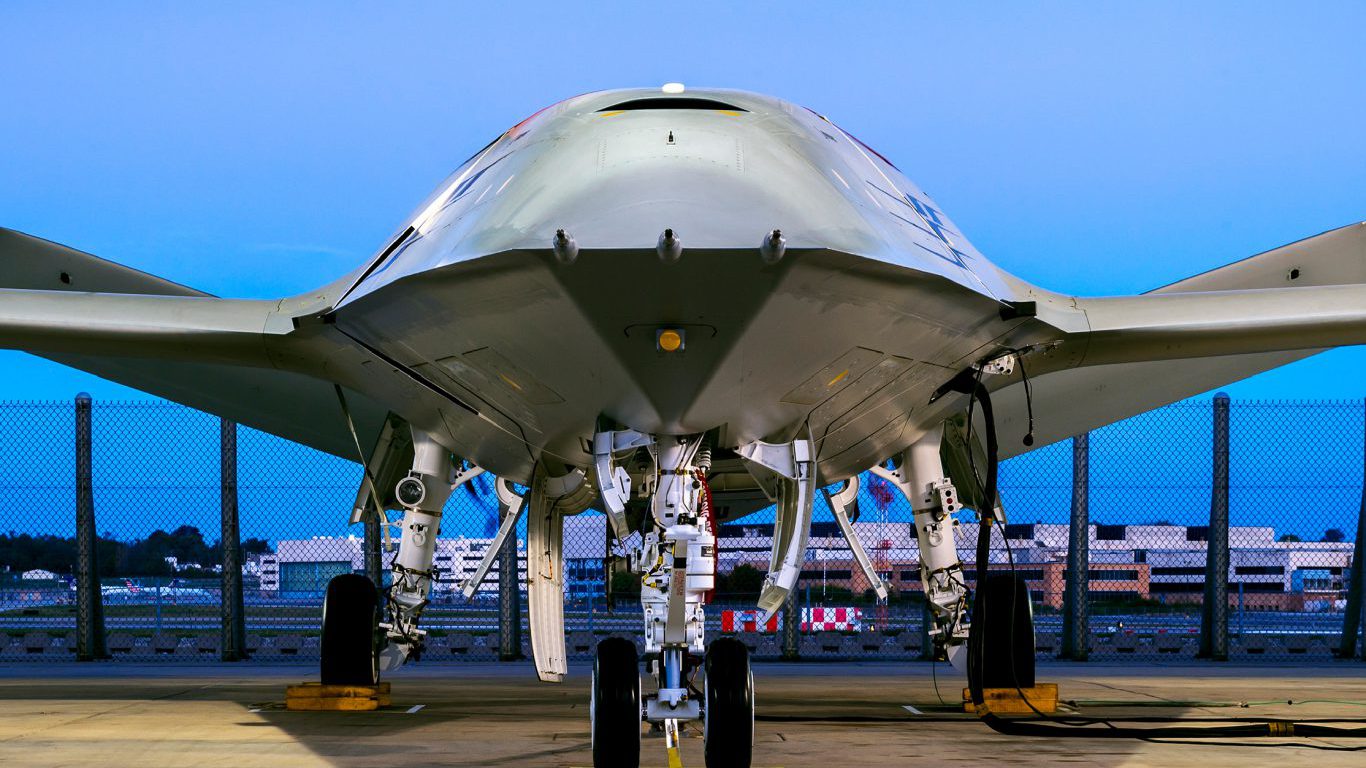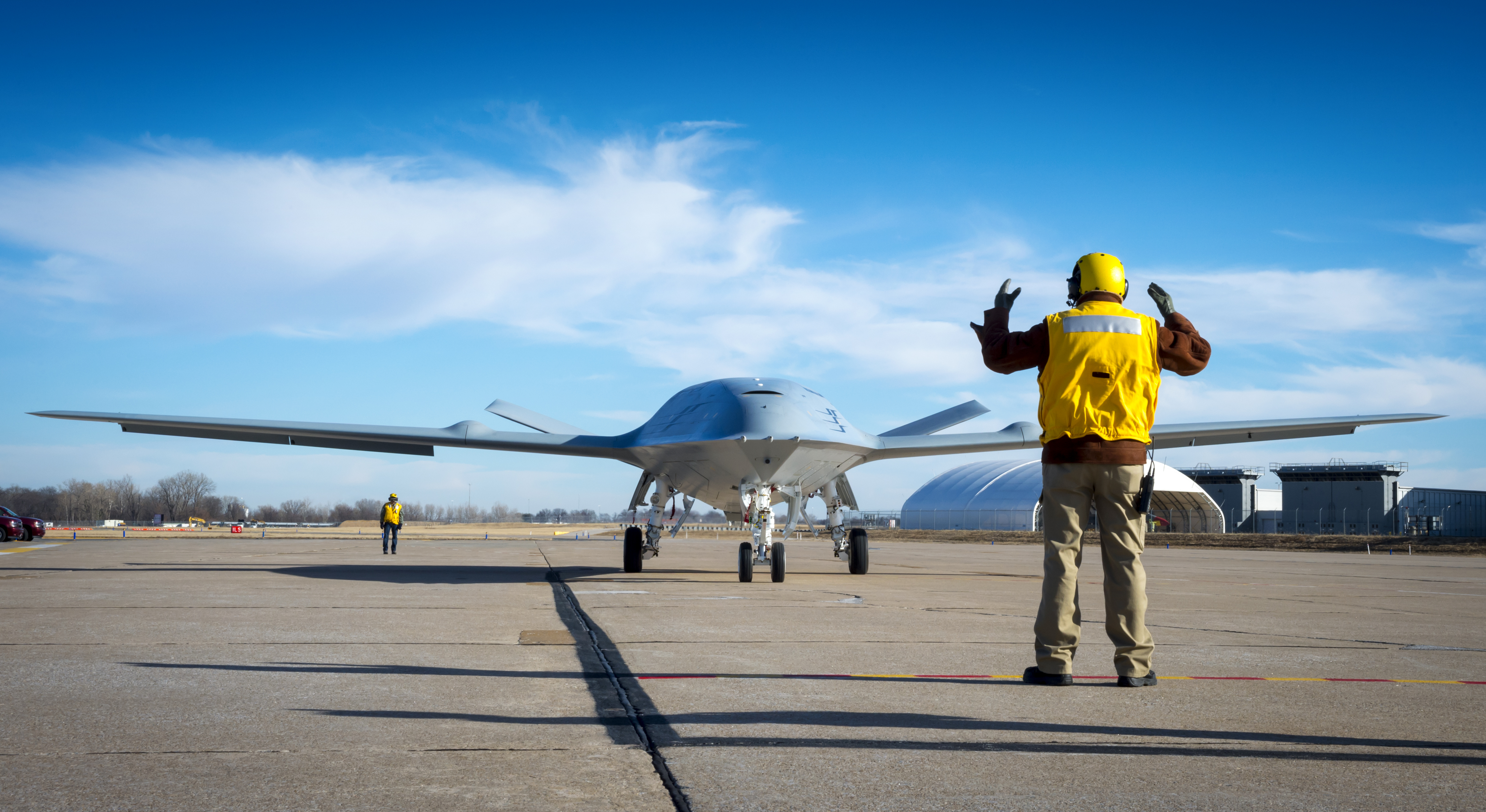
The U.S. Navy on Thursday awarded a contract to The Boeing Co. (NYSE: BA) to design, build and deliver four MQ-25A unmanned air vehicles (drones) that will serve as refueling tankers for Navy carrier air wings. The initial contract award totals $805 million and $79 million is being paid out of the Navy’s fiscal year 2018 budget.
The potential value of the contract is much larger. According to a report at Breaking Defense, the drone tanker program, known as Stingray, is expected to be worth $13 billion by the time Boeing builds all 72 drones in the proposed fleet. As we noted in March, the Navy’s requirements include being able to deliver 14,000 pounds of fuel at distances of up to 500 miles from an aircraft carrier.
Chief of Naval Operations Adm. John Richardson said:
This is an historic day. We will look back on this day and recognize that this event represents a dramatic shift in the way we define warfighting requirements, work with industry, integrate unmanned and manned aircraft, and improve the lethality of the air wing.
The president and CEO of Boeing’s defense division, Leanne Caret, said:
As a company, we made an investment in both our team and in an unmanned aircraft system that meets the U.S. Navy’s refueling requirements. The fact that we’re already preparing for first flight is thanks to an outstanding team who understands the Navy and their need to have this important asset on carrier decks around the world.
The drone’s ability to extend the range of carrier-based aircraft means that the carriers themselves (which now cost about $13 billion apiece) can stay out of range of most of China’s anti-ship missiles threatening the South China Sea and the Sea of Japan.
Both General Atomics and Lockheed Martin bid on the drone tanker contract, but only Boeing built a complete prototype that the company has been testing on a St. Louis-area runway painted with the outline of a carrier deck.
Other military requirements for the Stingray tanker include the ability to use existing aerial refueling systems and operate with carriers’ catapult launching and arrested landing systems.
Boeing’s stock traded flat on Thursday and was up about 0.1% in Friday’s premarket to $347.20, in a 52-week range of $234.29 to $374.48. The consensus price target on the stock is $410.83.
Here’s a photo of the Boeing prototype:

It’s Your Money, Your Future—Own It (sponsor)
Retirement can be daunting, but it doesn’t need to be.
Imagine having an expert in your corner to help you with your financial goals. Someone to help you determine if you’re ahead, behind, or right on track. With SmartAsset, that’s not just a dream—it’s reality. This free tool connects you with pre-screened financial advisors who work in your best interests. It’s quick, it’s easy, so take the leap today and start planning smarter!
Don’t waste another minute; get started right here and help your retirement dreams become a retirement reality.
Thank you for reading! Have some feedback for us?
Contact the 24/7 Wall St. editorial team.
